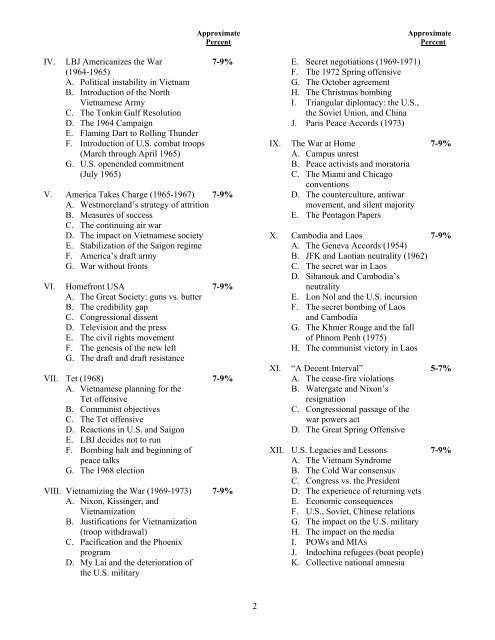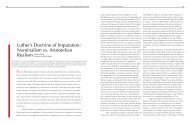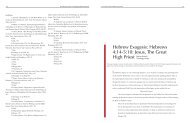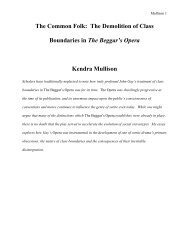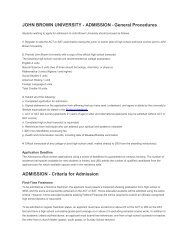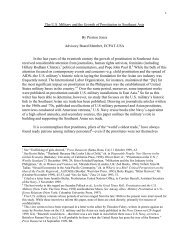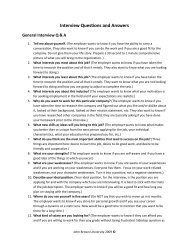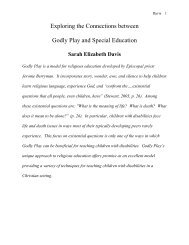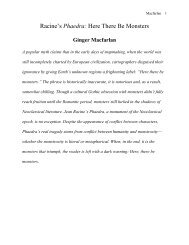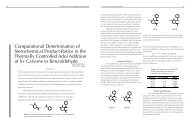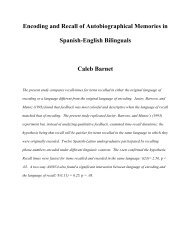A History of the Vietnam War - DSST | Get College Credit
A History of the Vietnam War - DSST | Get College Credit
A History of the Vietnam War - DSST | Get College Credit
You also want an ePaper? Increase the reach of your titles
YUMPU automatically turns print PDFs into web optimized ePapers that Google loves.
Approximate<br />
Percent<br />
IV. LBJ Americanizes <strong>the</strong> <strong>War</strong> 7-9%<br />
(1964-1965)<br />
A. Political instability in <strong>Vietnam</strong><br />
B. Introduction <strong>of</strong> <strong>the</strong> North<br />
<strong>Vietnam</strong>ese Army<br />
C. The Tonkin Gulf Resolution<br />
D. The 1964 Campaign<br />
E. Flaming Dart to Rolling Thunder<br />
F. Introduction <strong>of</strong> U.S. combat troops<br />
(March through April 1965)<br />
G. U.S. openended commitment<br />
(July 1965)<br />
V. America Takes Charge (1965-1967) 7-9%<br />
A. Westmoreland’s strategy <strong>of</strong> attrition<br />
B. Measures <strong>of</strong> success<br />
C. The continuing air war<br />
D. The impact on <strong>Vietnam</strong>ese society<br />
E. Stabilization <strong>of</strong> <strong>the</strong> Saigon regime<br />
F. America’s draft army<br />
G. <strong>War</strong> without fronts<br />
VI. Homefront USA 7-9%<br />
A. The Great Society: guns vs. butter<br />
B. The credibility gap<br />
C. Congressional dissent<br />
D. Television and <strong>the</strong> press<br />
E. The civil rights movement<br />
F. The genesis <strong>of</strong> <strong>the</strong> new left<br />
G. The draft and draft resistance<br />
VII. Tet (1968) 7-9%<br />
A. <strong>Vietnam</strong>ese planning for <strong>the</strong><br />
Tet <strong>of</strong>fensive<br />
B. Communist objectives<br />
C. The Tet <strong>of</strong>fensive<br />
D. Reactions in U.S. and Saigon<br />
E. LBJ decides not to run<br />
F. Bombing halt and beginning <strong>of</strong><br />
peace talks<br />
G. The 1968 election<br />
VIII. <strong>Vietnam</strong>izing <strong>the</strong> <strong>War</strong> (1969-1973) 7-9%<br />
A. Nixon, Kissinger, and<br />
<strong>Vietnam</strong>ization<br />
B. Justifications for <strong>Vietnam</strong>ization<br />
(troop withdrawal)<br />
C. Pacification and <strong>the</strong> Phoenix<br />
program<br />
D. My Lai and <strong>the</strong> deterioration <strong>of</strong><br />
<strong>the</strong> U.S. military<br />
E. Secret negotiations (1969-1971)<br />
F. The 1972 Spring <strong>of</strong>fensive<br />
G. The October agreement<br />
H. The Christmas bombing<br />
I. Triangular diplomacy: <strong>the</strong> U.S.,<br />
<strong>the</strong> Soviet Union, and China<br />
J. Paris Peace Accords (1973)<br />
Approximate<br />
Percent<br />
IX. The <strong>War</strong> at Home 7-9%<br />
A. Campus unrest<br />
B. Peace activists and moratoria<br />
C. The Miami and Chicago<br />
conventions<br />
D. The counterculture, antiwar<br />
movement, and silent majority<br />
E. The Pentagon Papers<br />
X. Cambodia and Laos 7-9%<br />
A. The Geneva Accords (1954)<br />
B. JFK and Laotian neutrality (1962)<br />
C. The secret war in Laos<br />
D. Sihanouk and Cambodia’s<br />
neutrality<br />
E. Lon Nol and <strong>the</strong> U.S. incursion<br />
F. The secret bombing <strong>of</strong> Laos<br />
and Cambodia<br />
G. The Khmer Rouge and <strong>the</strong> fall<br />
<strong>of</strong> Phnom Penh (1975)<br />
H. The communist victory in Laos<br />
XI. “A Decent Interval” 5-7%<br />
A. The cease-fire violations<br />
B. Watergate and Nixon’s<br />
resignation<br />
C. Congressional passage <strong>of</strong> <strong>the</strong><br />
war powers act<br />
D. The Great Spring Offensive<br />
XII. U.S. Legacies and Lessons 7-9%<br />
A. The <strong>Vietnam</strong> Syndrome<br />
B. The Cold <strong>War</strong> consensus<br />
C. Congress vs. <strong>the</strong> President<br />
D. The experience <strong>of</strong> returning vets<br />
E. Economic consequences<br />
F. U.S., Soviet, Chinese relations<br />
G. The impact on <strong>the</strong> U.S. military<br />
H. The impact on <strong>the</strong> media<br />
I. POWs and MIAs<br />
J. Indochina refugees (boat people)<br />
K. Collective national amnesia<br />
2


